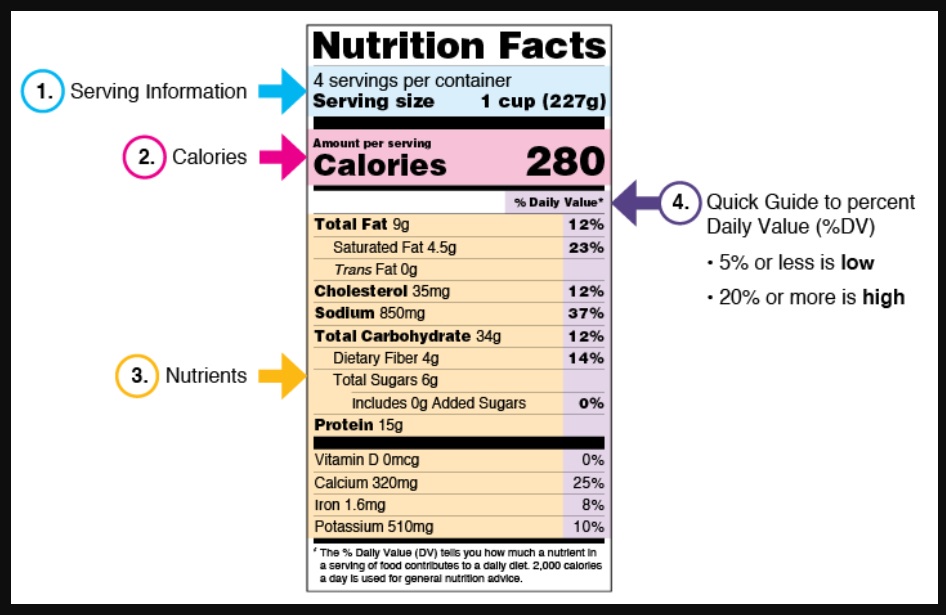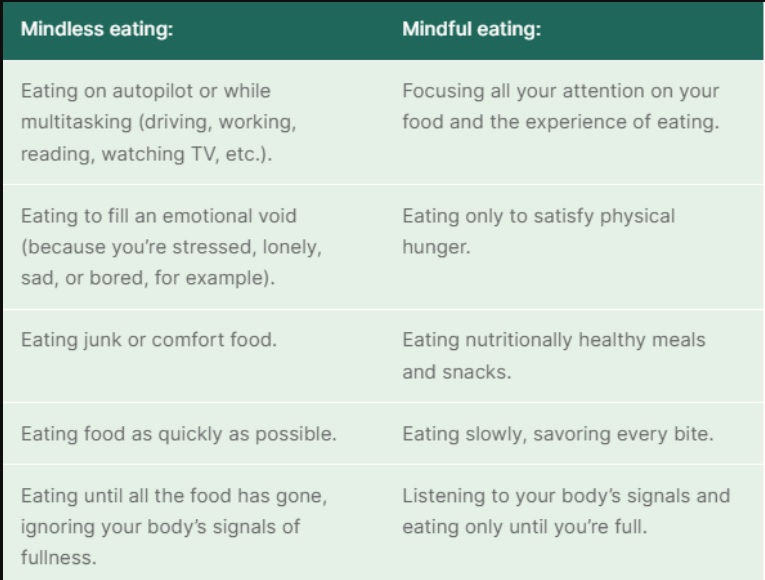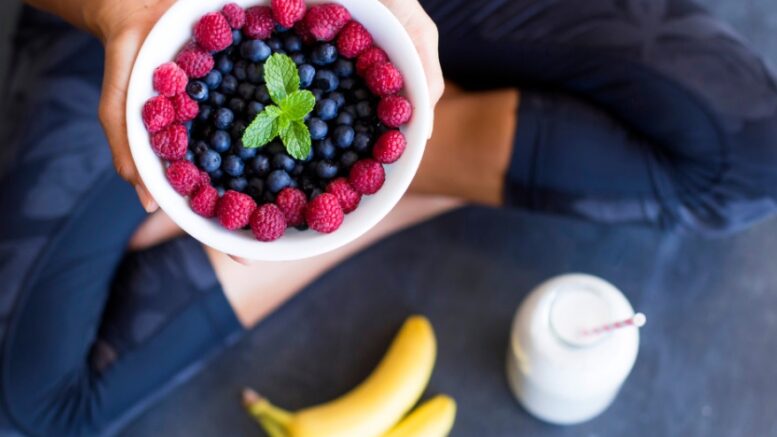Snacking has become a common practice in modern society, with various motivations driving our desire for a quick bite. Whether it’s fueled by hunger, social influences, boredom, or indulgence, snacking has become deeply ingrained in our food culture.
However, research has shed light on the potential consequences of our snack choices, revealing the impact of marketing and the ubiquity of unhealthy options.
In fact, the food and beverage industry spends an astonishing amount of nearly $14 billion annually on advertising in the US, with the majority promoting fast food, sugary drinks, and unhealthy snacks.
In this article, we will provide a health-conscious snacker’s guide to making intelligent choices in the face of these tempting options, empowering you to take control of your well-being.
Understanding Nutritional Labels

You should always check the nutritional labels on food packaging to make informed choices about what you’re eating. These labels provide important information about the nutrients and ingredients in the food you consume.
In that way, whenever a question pops up in your head like “Are Wheat Thins healthy?”, a quick check of the nutritional labels can help you understand what to consume and what to avoid.
Start by looking at the serving size to understand how much of the food the label refers to. Then, pay attention to the calories per serving and the amount of fat, carbohydrates, and protein.
It’s also important to check for any added sugars, sodium, or artificial ingredients.
Identifying Hidden Sugars and Additives
Avoiding hidden sugars and additives in your snacks is essential for maintaining a healthy lifestyle. When you reach for a snack, it’s important to be mindful of what you’re putting into your body.
Here are some reasons why it’s crucial to identify hidden sugars and additives:
- Hidden sugars can lead to weight gain and increase the risk of chronic diseases like diabetes and heart disease. Seeing the impact on your waistline can be a wake-up call, motivating you to make healthier choices. Knowing that excess sugar can negatively affect your overall health can empower you to take control of your diet.
- Additives like artificial colors and flavors can have harmful effects on your body. Understanding the potential risks associated with these additives can help you make informed decisions. Making a conscious effort to avoid additives can give you peace of mind, knowing you’re doing what’s best for your health.
Choosing Healthy Snack Options
When it comes to choosing healthy snack options, you want to make sure you’re fueling your body with the right nutrients to keep you energized and satisfied.
Look for snacks that are high in fiber and protein, as these will help you feel fuller for longer and prevent unhealthy cravings. Opt for fresh fruits and vegetables, whole grains, and lean proteins like nuts or yogurt.
Avoid snacks that are high in added sugars, saturated fats, and artificial additives. Read the labels carefully and look for snacks that have minimal ingredients and no hidden sugars.
Portion Control and Mindful Eating
Portion control and mindful eating can help in managing your weight and maintaining a healthy lifestyle. By being conscious of how much you eat and paying attention to your body’s hunger and fullness cues, you can make smarter choices and prevent overeating.
Here are some emotional benefits of practicing portion control and mindful eating:
- Reduced guilt: You can enjoy your favorite foods without feeling guilty or deprived by simply controlling your portion sizes.
- Increased satisfaction: By savoring each bite and eating slowly, you can truly appreciate the flavors and textures of your food, leading to a greater sense of satisfaction.
- Improved self-control: Mindful eating helps you develop better self-control and resist impulsive eating, leading to a greater sense of accomplishment and empowerment.

Incorporating Homemade Snack Ideas
Incorporating homemade snack ideas into your routine can be a delicious and satisfying way to curb cravings and stay on track with your healthy eating goals. By making your own snacks, you have control over the ingredients and portion sizes. Plus, it can be fun and rewarding to experiment with flavors and combinations.
Instead of reaching for store-bought chips or cookies, try making your own granola bars with oats, nuts, and dried fruits. Or whip up a batch of homemade hummus with whole-wheat pita chips for a satisfying snack that is packed with protein and fiber.
You can also make your own trail mix with a mix of nuts, seeds, and dark chocolate for a sweet and salty treat. Get creative and enjoy the process of making your own snacks while nourishing your body.
Final Takeaway
Understanding nutritional labels, identifying hidden sugars and additives, choosing healthy options, practicing portion control and mindful eating, and incorporating homemade snacks can help us make smart choices for our health.
By being informed and armed against marketing influences, we can prioritize our well-being and make a positive impact on our overall health and longevity. Remember to choose wisely when reaching for a snack and prioritize self-care.
FAQs
Q: How can I make sure I’m getting enough nutrients from my snacks?
It’s important to choose snacks that are high in fiber, protein, and essential vitamins and minerals. Look for options like fresh fruits and vegetables, lean proteins, whole grains, and nuts to ensure you’re getting a good balance of nutrients.
Q: Can I still enjoy occasional indulgent snacks while following a health-conscious snacking approach?
Absolutely! It’s all about moderation. While it’s important to prioritize nutritious snacks, it’s okay to enjoy indulgent snacks occasionally as long as they are balanced with healthier choices and consumed in appropriate portions.
Q: Are there any specific snacks that can help curb cravings?
Snacks that are high in fiber and protein are great for curbing cravings and keeping you feeling satisfied. Examples include Greek yogurt with berries, celery sticks with almond butter, or a handful of nuts and seeds.
Q: How can I ensure that my homemade snacks stay fresh and don’t spoil quickly?
To keep your homemade snacks fresh, store them in airtight containers or resealable bags. If necessary, you can also refrigerate or freeze them to extend their shelf life.
Q: How can I resist the temptation of unhealthy snacks when they are so readily available?
One strategy is to plan ahead and have healthier alternatives readily available. Stock your pantry and fridge with nutritious options, and remove or limit the presence of unhealthy snacks. Additionally, practicing mindful eating and staying aware of your body’s hunger and fullness cues can help you resist impulsive snacking on unhealthy choices.
